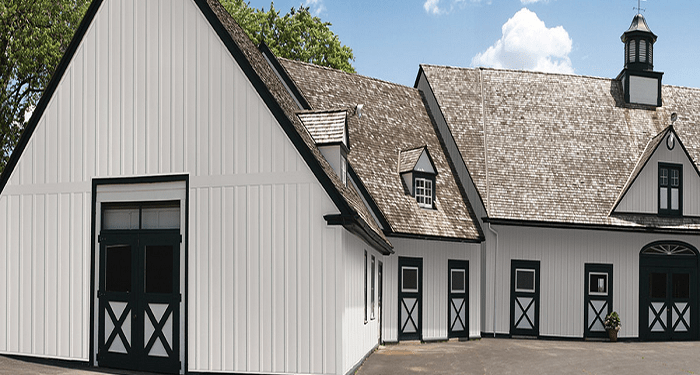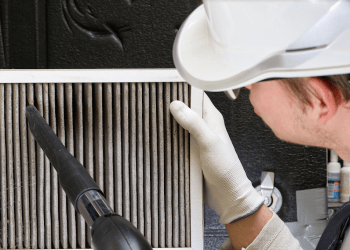Preparation of walls
- Thorough preparation of the base is the key to quality siding installation. The smoother the surface of the walls and laths will be, the better the result will be. The surface must be flat.
- Siding should be attached to the crate on any surface of the walls. This will provide a ventilated gap for the removal of water vapor, will allow you to save on heating in the winter, and will significantly reduce the heating of the house in the summer.
- In order for the siding to serve for a long time, it is mounted on top of the moisture-insulating material. It is advisable to provide waterproofing of all openings, and also in those places where the siding comes into contact with other building materials.
- Siding is not capable of bearing mechanical load, it protects the walls and makes the house beautiful, siding cannot be used instead of the load-bearing material of the outer wall.
Cleaning the walls
- Remove all shutters, downspouts, light fixtures, grills, and other surface-mounted fixtures intended for siding installation.
- Dismantle the old finishing materials or fix them so that it does not interfere with the installation of the siding.
Lattice
- Install a crate over the entire surface of the structure. In case of unevenness of the walls, the grating is leveled with the help of additional spacers made of wood, plywood or by changing the thickness of the rails.
- If the wall is wooden, the crate is made of wooden slats measuring 4×6 cm. If the wall is brick or concrete, in addition to wooden slats, you can put PVC slats or a galvanized profile (the most reliable option).
- Carefully select wooden slats, rejecting raw and crooked material. The humidity of the rails should not exceed 15-18%, they should be straight, if possible without knots, and they should be impregnated with an antiseptic liquid.
- When installing horizontal siding, install the crate vertically at a distance of 30-40 cm from each other, and additionally around windows, doors, other openings and openings, at all corners, at the bottom and top of the area of installation of the siding. If in the future you plan to hang lamps, other external objects, it is advisable to install an additional crate in these places.
- The general scheme of preparing walls without insulation is shown below. In some cases, you can do without moisture insulation. The need for it, the choice of insulating material depends on the materials from which the walls are made, and the climate in your region.
You should not combine vertical rails with horizontal ones, this can lead to a violation of ventilation under the siding kansas city.
In areas with strong winds, install the crate every 20 cm. We recommend driving nails through rubber washers to improve wind resistance.
Warming
Siding allows you to insulate the house from the outside of the wall, without losing internal space. In this case, waterproofing is mandatory.
In addition to the option shown above, some insulating materials can be laid directly on the insulation. In this case, keep an air gap of 1.5-2 cm between the insulation and the siding.
Sealing
Seal the walls with sealant wherever moisture can penetrate: around windows and doors, in places where electric, gas, and water mains are laid.
Installation of fittings
First, a whole series of accessories is installed: starting profile, internal and external corners, J-profile and others, and only then – siding panels. The installation ends with the installation of the finishing strip.
Determination of the starting point of installation
- On one of the walls, from the edge, determine the lowest level from which the installation of the siding will begin.
Drive a nail 7.5-8 cm above this level. Drive a nail in the same way on the other corner of the wall.
- Pull the rope between the nails. Be sure to level it with a level.
- Mark an even, straight line between the nails with chalk on the rope. Repeat this procedure around the entire house.
Setting the startup profile
- Set the starting profile with the upper edge on the chalk line, and nail it. Remember that you should not hammer the nails too tightly either into the siding or into the hardware (a detailed description of the fastening process is in the “Fixing the siding” section).
- If there are depressions on the surface of the wall, put a gasket under the starting profile to avoid a wave effect.
- The distance between adjacent starting profiles, between the starting profile and the outer (inner) corners – 6 mm, taking into account the possible expansion of the siding.









